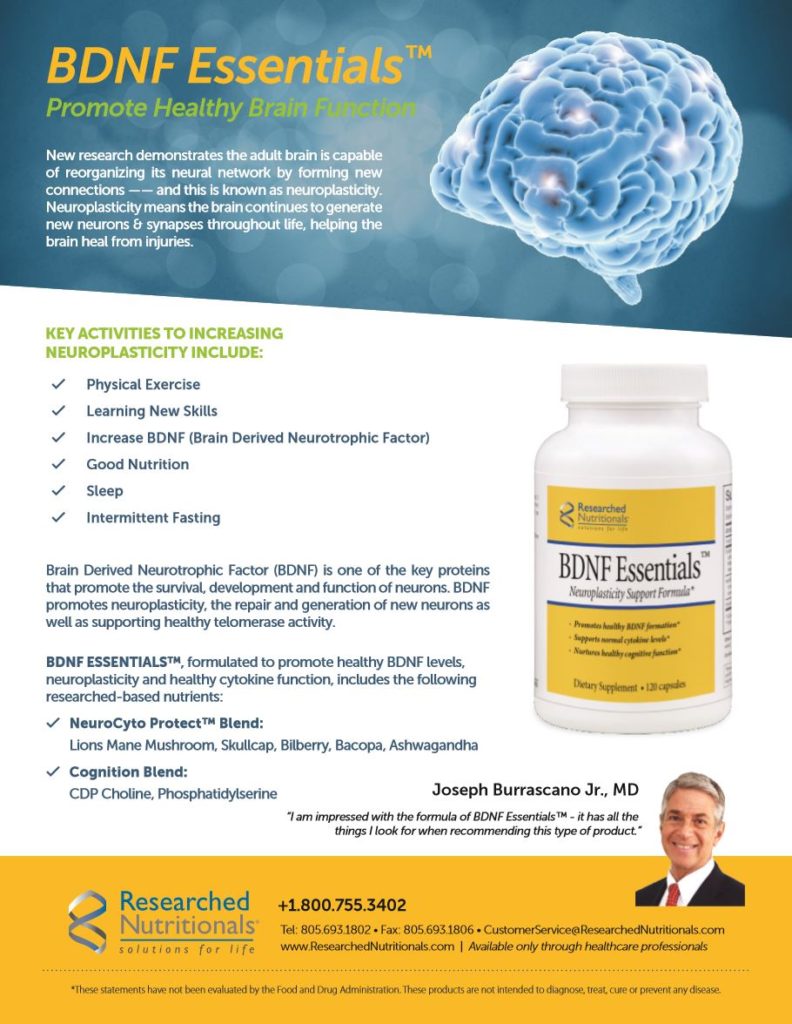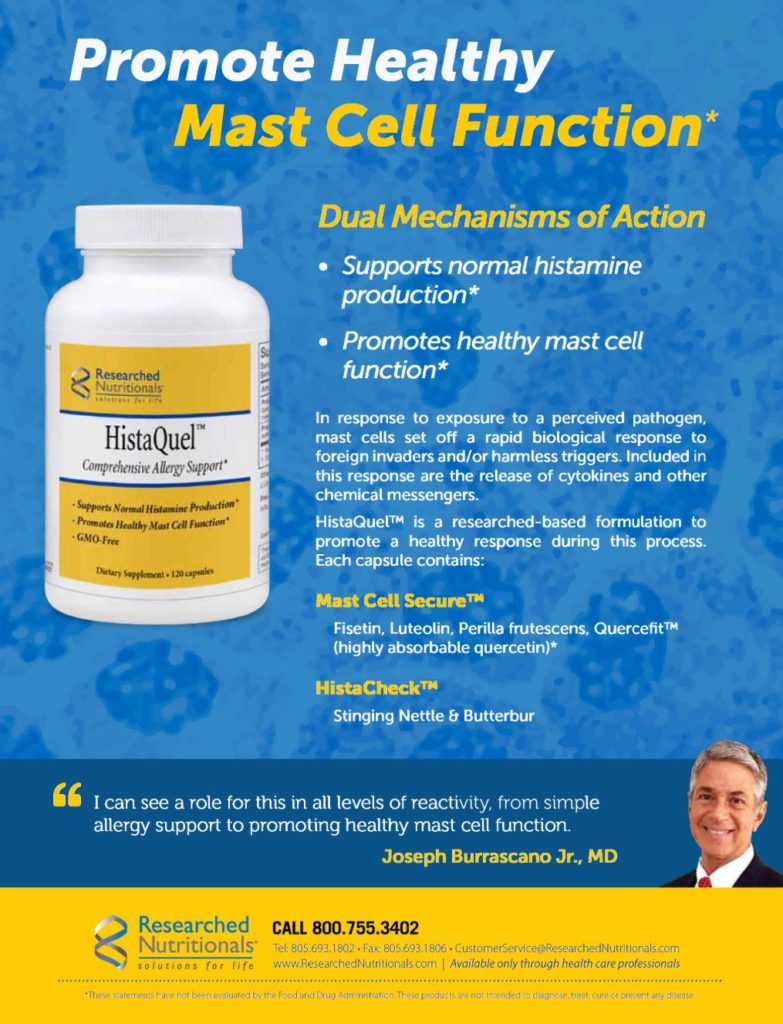by Debby Hamilton, MD, MPH

BDNF Essentials™
The concept of neuroplasticity has given us hope that we can heal and repair the brains of our sickest patients from autism to Alzheimer’s. Neuroplasticity is the ability of the brain to grow, change, and repair. Brain derived neurotropic growth factor or BDNF is the critical brain compound that fosters neuroplasticity. Chronic conditions with neurologic impairment from dementia to traumatic brain injury and even to our ever-increasing prevalence of mood disorders are often associated with low levels of BDNF. Finding ways to increase levels of BDNF is important in treatment of many of our patients with cognitive impairment.
BDNF Essentials™ is a product designed to improve BDNF levels and foster healing of the nervous system. Improving BDNF and healing the cells involves supporting two different mechanisms. The first is the use of supportive herbs that have been shown to increase BDNF in research studies. The second is the use of phospholipids to support repair of the cell membranes. The NeuroCytoProtect™ blend contains lion’s mane mushroom, Scutellaria lateriflora (skullcap), bilberry, bacopa, and ashwagandha. These herbs were found to increase BDNF in research studies. With the increasing levels of BDNF, patients were also found to have cognitive improvement in memory, attention, and processing along with decreases in depression and anxiety. The Cognition Blend™ contains a combination of CDP-choline or citicoline and phosphatidylserine. These phospholipids are important components of cell membranes and needed for repair of these membranes. Equally important is research showing cognitive improvement with these phospholipids. Overall BDNF Essentials™ offers nutritional support to encourage neuroplasticity through supporting BDNF and cell membrane function.
BioDisrupt®
Many microbial communities exist in a structure called biofilms. These biofilms serve a protective function for the bacteria and yeast by the formation of a physical barrier to antimicrobials. This structural barrier is made by the microorganisms and contains primarily proteins along with carbohydrates and lipids. Chronic infections from the intestine to the sinuses are often difficult to treat because of biofilms. In order to treat these chronic infections, the biofilm needs to be broken down for the antimicrobials to reach the bacteria and the yeast.
BioDisrupt® is a product designed to target and break down biofilms. Treating infections caused by biofilms involves three mechanisms. To treat biofilms, the biofilm needs to be disrupted, the microbes need to be treated, and formation of new biofilms needs to be prevented. Quorum sensing is the communication between microbes that allows them to form biofilms, and inhibiting this mechanism helps prevent biofilm formation.
The structural matrix of the biofilm needs to be broken down first by enzymes to allow the antimicrobials to reach the microbes. The EnzymeDisrupt™ blend contains multiple enzymes targeted to treat the different components of the biofilm, including lysozyme, serratiopeptidase, beta-glucanase, lipase, protease 4.5, cellulase, and hemicellulase. In order to target multiple bacterial and fungal species, an herbal blend called HerbDisrupt™ was created, including cranberry, berberine, rosemary and peppermint. These herbs in research have been found to be anti-microbial, anti-quorum sensing, and anti-adhesive. These functions are needed to treat the infection and prevent the formation of new biofilms. N-acetylcysteine (NAC) is the final component of BioDisrupt®. NAC is a mucolytic and has been shown in research to aid in biofilm disruption. Since chronic infections are known to have biofilms, BioDisrupt® offers a tool that targets both facets needed in fighting these infections, including breaking down the structural matrix and having antimicrobial properties.
HistaQuel®
Mast cell activation has increasingly been found to be a factor in chronic disease promoting an ongoing cycle of inflammation and oxidative stress. Multiple environmental factors can trigger mast cell activation, including infections, inflammation, food, and toxins. One of the primary compounds released by mast cells is histamine. In addition, mast cells release tryptase, pro-inflammatory cytokines, and other inflammatory mediators. Once released from the mast cell, these mediators cause symptoms that impact all body systems and can be very disabling. As we are learning more about mast cell activation impacting chronic illness, finding ways to target this is crucial.
HistaQuel® is a formulation designed to inhibit mast cell activation and block histamine 1 receptors to help both mast cell activation syndrome and allergic conditions. MastCell Secure™ is a group of flavonoid herbs, including luteolin, Quercefit (enhanced form of quercetin for increased absorption), perilla, and fisetin. These herbs have been shown in research to inhibit mast cell activation, including release of histamine throughout the body. Clinical research on these herbs has shown improvement for allergic conditions and mast cell activation. Nettle leaf is also part of the supplement, which has been shown in research to block the histamine 1 receptor. When histamine binds to this receptor, it activates allergic responses. HistaQuel® offers a dual mechanistic approach to decrease mast activation and allergies.





